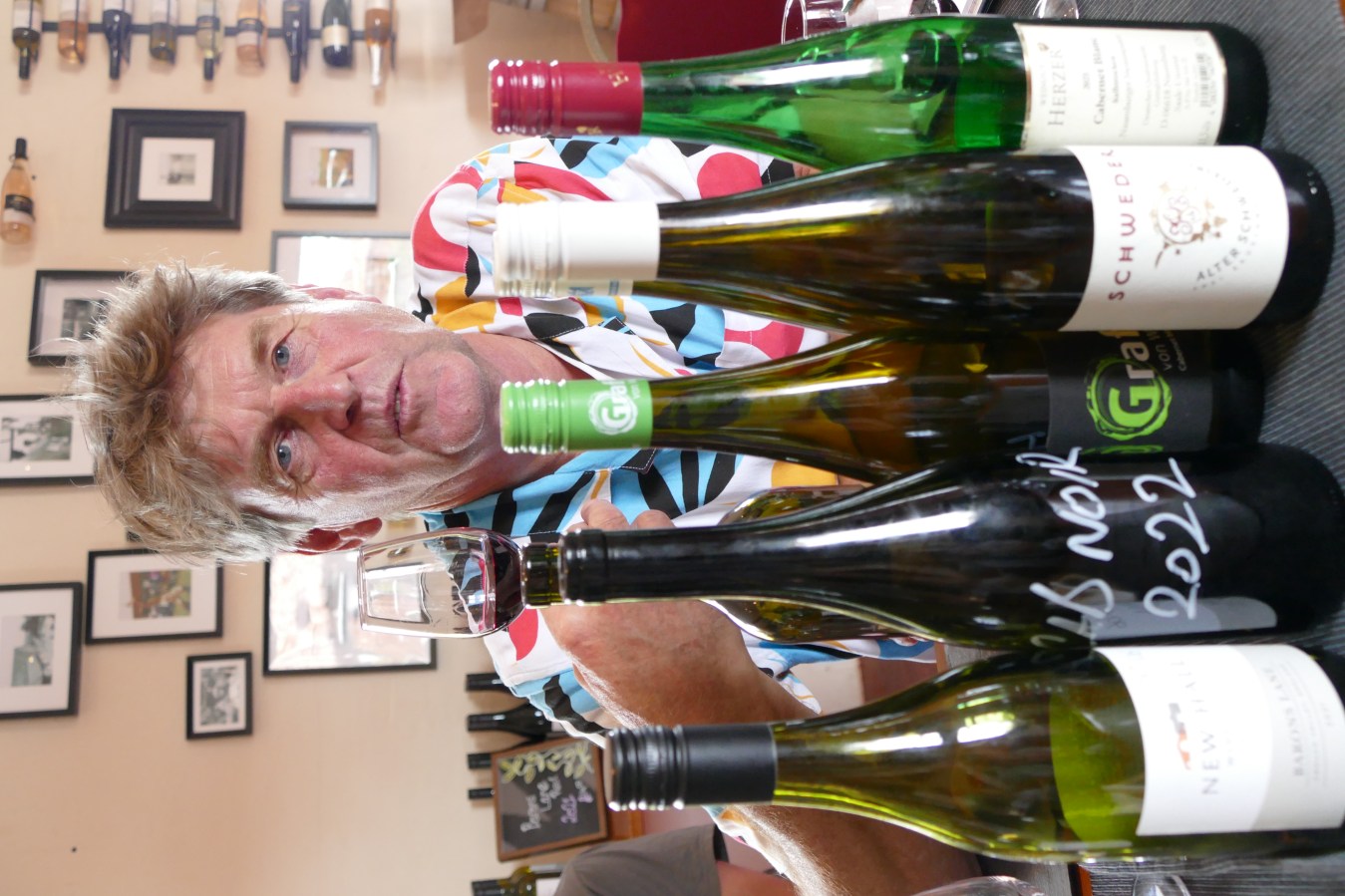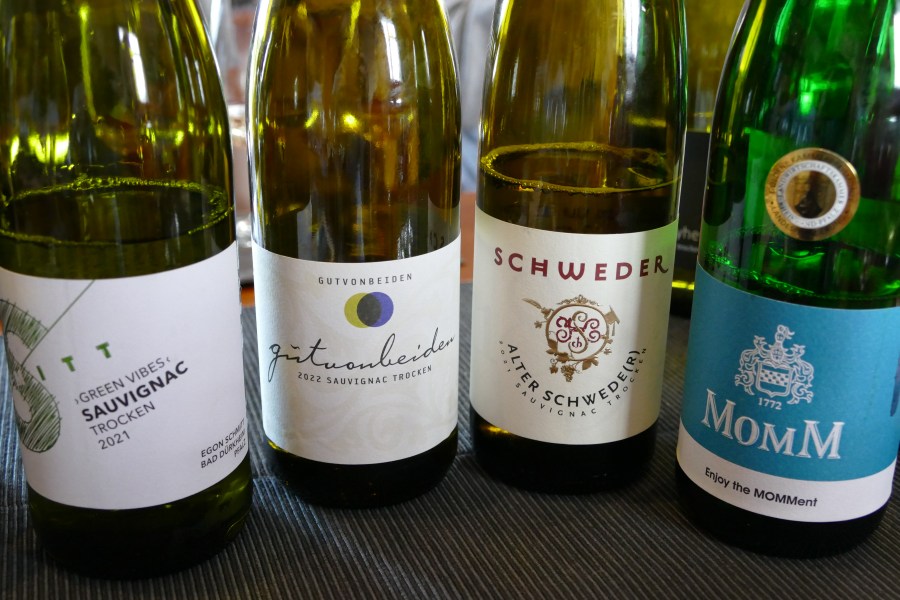On 5 July at New Hall Vineyard in Essex Vineyard magazine attended a wine tasting conducted by Sam Doncaster. This was one of a series of winetastings designed specifically to introduce PIWI varieties to growers and winemakers in England and Wales.
In the lovely tasting room at New Hall vineyard winemakers and viticulturists from Dorset, Suffolk and Essex were taken through a selection of unfamiliar varieties. There were some sceptical comments at the beginning of the evening with one winemaker suggesting that customers have just got used to the idea of Bacchus as a grape variety but by the end of the evening Sam had won the room. It was not just that these varieties offer greater disease resistance whilst offering attractive yield values but that these wines all examples from cool climates offered incredible flavour profiles and a versatility of wine style that was quite astonishing.
Introducing the evening tasting Sam said with a smile: “This is going to start a revolution.”
Cabernet Blanc
Described by Sam as a lovely variety with the possibility of yields reaching 12 tonne a hectare. There were two sparkling wines followed by four still wines from this grape variety showcasing the versatility of the variety.
One of the still wines was an off dry style from “way over on the north-east side of Germany arguably one of the coolest places that anybody grows vines on the continent, adjacent to this block of vines of Cabernet Blanc is Bacchus they are capable of growing in the same climatic conditions and that is relevant to the UK and interesting,” said Sam.
To many of the winemakers in the room this was the first experience of this variety and yet one of the wines has been produced by the same family for 20 years giving them plenty of vintages to hone their skill with this variety. Approximately 150 families now make wine from this grape,” said Sam. “These varieties are already in the mainstream in Germany, you can buy these wines in supermarkets, villages and cafés,” he added. To illustrate the point Sam introduced the final Cabernet Blanc from a producer in Forst, Pfalz carrying the highly prestigious VDP mark.
Cabernet Jura Rosé
This variety was included in the tasting because field trials and anecdotal evidence indicate that in frost prone areas the second shoots are particularly high yielding. The obvious benefits for cool climate winemaking.
Sauvignac
Another flight of four wines. This tasting was really interesting in that it included an example from a winemaker in England.
Caberet Noir
This variety was familiar to me and I am aware of several pioneering vineyards in the UK that have planted this variety and already make wines from this grape. Sam was able to present one of these wines from a producer in Kent and the variety continues to impress. One of the winemakers present suggesting there is much it can offer in the blending of still red in England and Wales.
Cabertin
The last variety in the tasting was perhaps the most surprising. Two red wines both made in cool climates and both with huge alcohol content. One wine having 14.5% and the second 15.5% all in attendance were amazed by not just the alcohol content but how both wines were different in style but both equally high quality. This variety can achieve great things for cool climate winemaking.
The atmosphere at the end of the tasting was full of energy and those present all felt that they had benefitted from the experience. Some went away pondering the extra something that these vines might be able to add their already excellent wines.
If you get the chance to attend one of these tastings please do not hesitate these varieties are just like the English and Welsh wine industry; innovative, sustainability aware and a force to be taken seriously.





